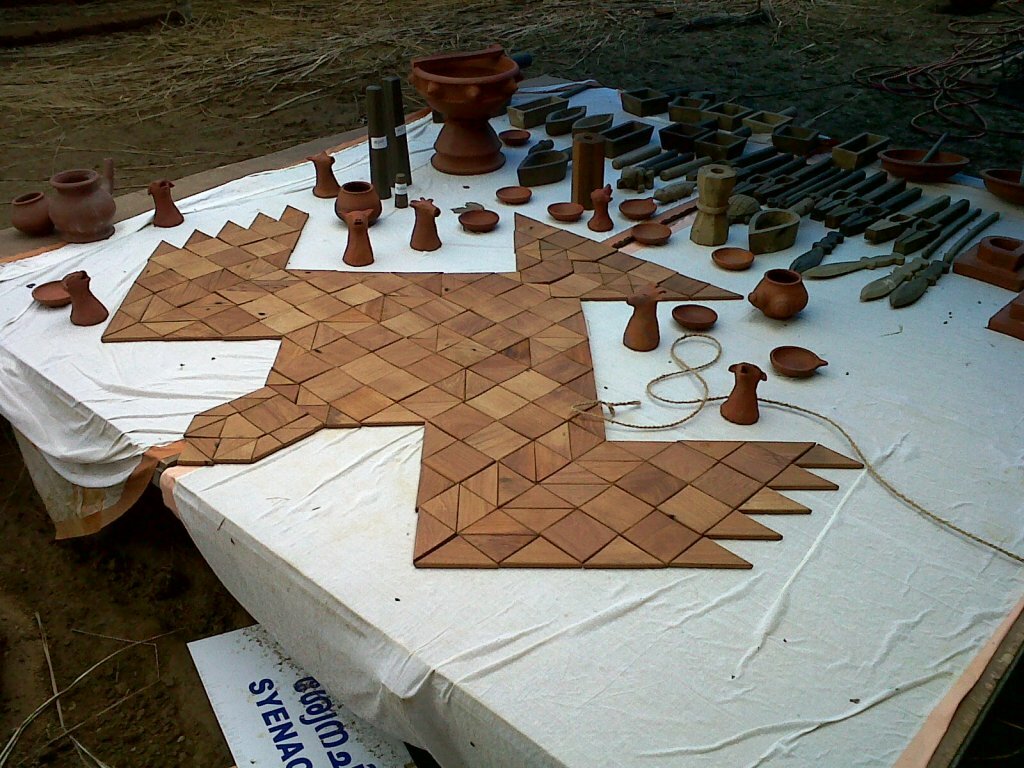Bhadrachalam Athirathram Yagam

According to the ancient texts on Yagam, any offer to Fire as a god, is actually an offer to Sun. Any such offer is either to enrich energy in the environment or to destroy the undesirable elements in the environment, and thus, in both ways, environment is protected.
Attaching divine nature to such rituals (Yagam) induced people to practice them. Thus, the ancient texts proclaim that "Such Vaidika Karmams are result-oriented and meant to lead to Sreyass or spiritual attainments". The technical procedures for such Karmams are detailed in ancient texts like the Braahmanams and Sroutha Soothrams. More important than the learning and understanding of the concepts, is the actual performance of such Karmams. In other words, the "performer" spreads more Sreyass to the world than the texts themselves.
Athirathram: Athirathram is considered as the biggest Somayagam,has been performed in Kerala from 04-04-2011 to 15-04-2011, as other bigger Somayagas are not usually performed by a Namboothiri. It is a 12 day ritual; Only those who have performed Agnishtomam is eligible to perform this Supreme Shroutha Somayagam.
Any person, attending this performance, is supposed to know how it is performed. Those who intend to attend this Supreme Shroutha Somayagam are advised to keep a copy of this article. Only very important points are included in this article.
This 12 day ritual has its first 3 days meant for Deekshaahassu, and then 6 days of Upassaddinangal. The remaining 3 days are meant for the most important part of Athiraathram, namely, the Suthyam. Each layer of the altar is constructed daily and thus the five-layer altar will consume as many days commencing Day-4 to Day-8. The altar consecration is done on day-9. Suthyam days would commence in the morning of the10th day which will continue till the end of the Athirathram, uninterrupted.
It is well-known that the vedic rituals have come down to us in two broad types, the Grihya and the Shrauta. The Grihya system is concerned with rites of passage of an individual such as the initiatory rite of the upanayana or marriage later. The Srauta ritual, on the other hand, is solemn and exalted, show casing in oral tradition the great learning of the Sruti literature, comprising, in other words, the three Vedas, (Rig-Yajur-Sama-vedas) and their ancillary texts. Whereas the Grihya system is still extant almost all over India, the Shrauta type has survived in only isolated pockets of Brahmin groups.
The Nambuthiri Brahmins of Kerala from one such pocket, keeping up live traditions of the Shrauta rituals. Three types of Shrauta rituals from their repertory, the Agnyadhana, the Agnistoma, and Agnichayana - Athirathra, the first one setting up the three fires of a Shrauta ritual and being initiatory to the latter two, both Shrauta ritals of the Soma class. The Agnistoma, or Soma yagam as it is known among the Nambuthiris, is the Prakruti or Paradigmatic model of the Soma ritual, lasting six days. The Agnicayana-Athirathra is a Vikrti-modification-of the Agnistoma, Agni to the Nambuthiris, lasting twelve days, a great spectacle and display of learning.
Bhadrachalam Athirathram Yagam 2012, About Bhadrachalam Athirathram Yagam, History of Athirathram Yagam, Athirathram Yagam, Athirathram Yagam History, Khammam Athirathram Yagam, Bhadrachalam Athirathram Yagam 2011, Athirathram, Yagam, Yagam in Khammam